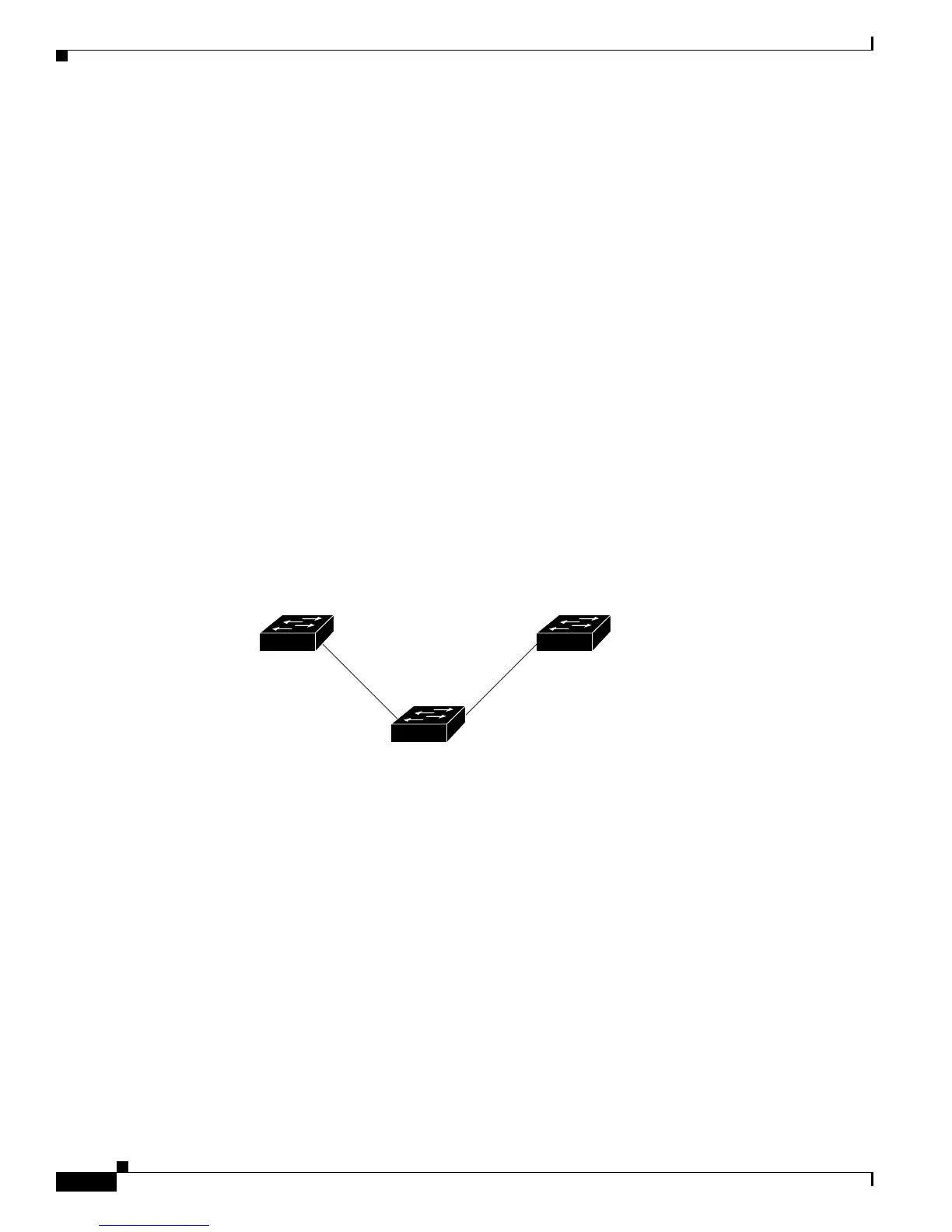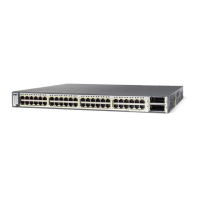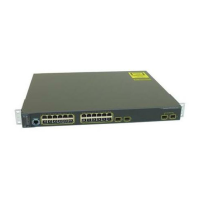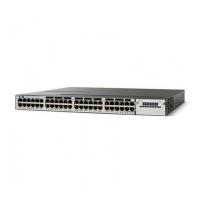23-2
Catalyst 3750-X and 3560-X Switch Software Configuration Guide
OL-21521-01
Chapter 23 Configuring Flex Links and the MAC Address-Table Move Update Feature
Understanding Flex Links and the MAC Address-Table Move Update
typically configured in service provider or enterprise networks where customers do not want to run STP
on the switch. If the switch is running STP, Flex Links is not necessary because STP already provides
link-level redundancy or backup.
You configure Flex Links on one Layer 2 interface (the active link) by assigning another Layer 2
i
nterface as the Flex Link or backup link. On Catalyst 3750-X switches, the Flex Link can be on the same
switch or on another switch in the stack. When one of the links is up and forwarding traffic, the other
link is in standby mode, ready to begin forwarding traffic if the other link shuts down. At any given time,
only one of the interfaces is in the linkup state and forwarding traffic. If the primary link shuts down,
the standby link starts forwarding traffic. When the active link comes back up, it goes into standby mode
and does not forward traffic. STP is disabled on Flex Link interfaces.
In Figure 23-1, p
orts 1 and 2 on switch A are connected to uplink switches B and C. Because they are
configured as Flex Links, only one of the interfaces is forwarding traffic; the other is in standby mode.
If
port 1 is the active link, it begins forwarding traffic between port 1 and switch B; the link between
port 2 (the backup link) and switch C is not forwarding traffic. If port 1 goes down, port 2 comes up and
start
s forwarding traffic to switch C. When port 1 comes back up, it goes into standby mode and does
not forward traffic; port 2 continues forwarding traffic.
You can also choose to configure a preemption mechanism, specifying
the preferred port for forwarding
traffic. For example, in the example in Figure 23-1, you can configure the Flex Links pair with
preemption mode. In the scenario shown, when port 1 comes back up and has more bandwidth than
po
rt 2, port 1 begins forwarding traffic after 60 seconds. Port 2 becomes the standby port. You do this
b
y entering the interface configuration switchport backup interface preemption mode bandwidth and
switchport backup interface preemption delay commands.
Figure 23-1 Flex Links Configuration Example
If a primary (forwarding) link goes down, a trap notifies the network management stations. If the standby
link goes down, a trap notifies the users.
Flex Links are supported only on Layer 2 ports and port channels, not on VLANs or on Layer 3 ports.
VLAN Flex Link Load Balancing and Support
VLAN Flex Link load-balancing allows users to configure a Flex Link pair so that both ports
simultaneously forward the traffic for some mutually exclusive VLANs. For example, if Flex Link ports
are configured for 1-100 VLANs, the traffic of the first 50 VLANs can be forwarded on one port and the
rest on the other port. If one of the ports fail, the other active port forwards all the traffic. When the failed
port comes back up, it resumes forwarding traffic in the preferred VLANs. This way, apart from
providing the redundancy, this Flex Link pair can be used for load balancing. Also, Flex Link VLAN
load-balancing does not impose any restrictions on uplink switches.
Switch A
Uplink
switch B
Port 1 Port 2
Uplink
switch C
116082
